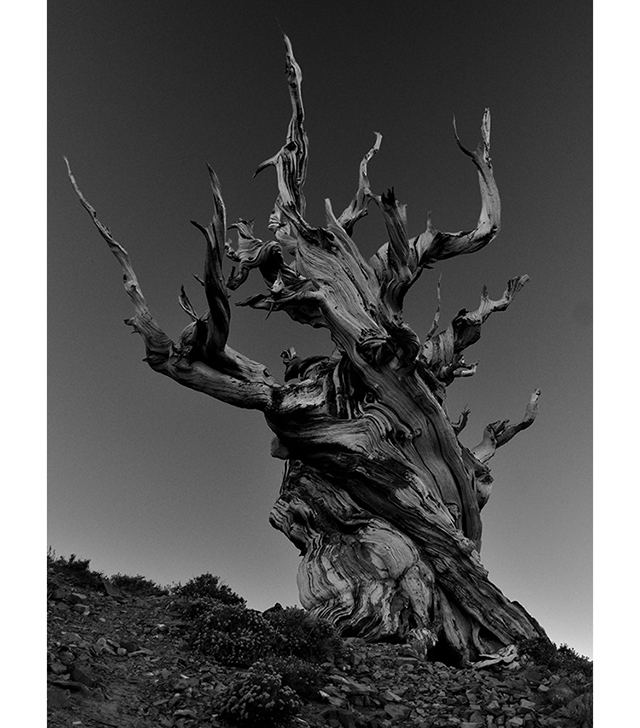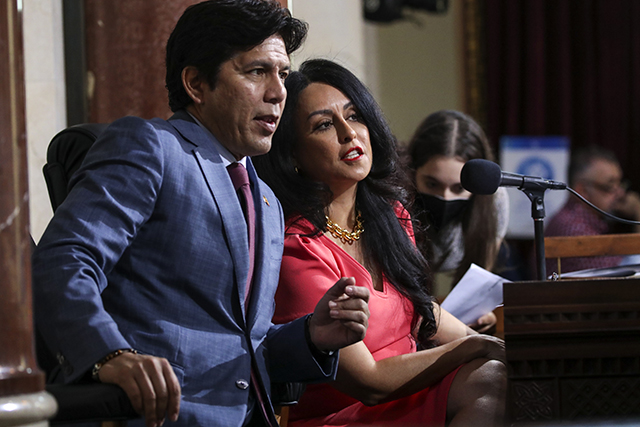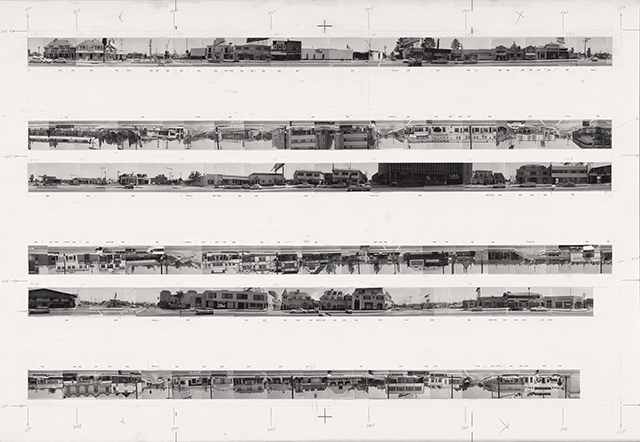
Good morning. It’s Monday, Oct. 10.
- The multibillion-dollar nightmare of high-speed rail.
- L.A. City Council president faces calls to resign.
- And one of America’s great backcountry adventures.
Statewide
1.

France’s national railroad came to California in the early 2000s with hopes to help develop the state’s bullet train. But the company’s recommendations were cast aside. So they pulled out, a project manager said: “They told the state they were leaving for North Africa, which was less politically dysfunctional. They went to Morocco and helped them build a rail system.” Morocco’s bullet train started service in 2018. N.Y. Times
2.
Since 1995, experts have repeatedly warned that California is uniquely vulnerable to gas price shocks. But policymakers never addressed the problem. “The way we’re doing it now is you just let the fuel costs go up and then we leave poor people with no ability to get anywhere,” said Amy Myers Jaffe, the managing director of Tufts University Climate Policy Lab. “And then [California leaders] grandstand against the oil companies.” L.A. Times
Gov. Gavin Newsom said he would call a special legislative session to pass a windfall tax on oil companies, accusing them of price gouging. “Greed and manipulation, that’s all this is,” he said. Wall Street Journal | Politico
3.
On Tuesday, the U.S. Supreme Court will hear a challenge to a California law that set some of the nation’s strictest animal welfare standards for pork sold in the state. Pork producers argue that because the law falls almost entirely on out-of-state farmers, it violates the Constitution’s commerce clause, which gives Congress the sole right to regulate interstate trade. The legal writer Ian Millhiser said the pork industry could present an unusually strong case. Vox
4.

The New York Times visited the world’s oldest trees:
“Ten thousand feet up in the White Mountains of central California, in a harsh desert where little else survives, majestic Great Basin bristlecone pines endure. Generally considered the oldest trees on Earth, they seem to have escaped the laws of nature.”
Northern California
5.

At 1:43 a.m. on Aug. 15, 2021, hours into what would grow into the monster Caldor fire, the Forest Service told its firefighters to stand down for the night, according to newly obtained dispatch logs. The agency wanted to reassess. But the decision dumbfounded state and local firefighters, as models showed the fire could overrun the town of Grizzly Flats — which it did. “It made no sense to me,” said retired fire captain Grant Ingram. “It should never have happened.” CBS News
6.
“This is not, in my opinion, a racist community.”
“As a parent it makes me scared.”
“By punishing people who are not guilty, what kind of lesson are you teaching?”
Amador High, a mostly white school in the foothills east of Sacramento, canceled its football season over a chat thread among students ahead of a game against a largely Black and Latino school, an extraordinary action that has the divided the community. The title of the chat: “Kill the Blacks.” L.A. Times
7.
The San Francisco metropolitan area experienced the largest drop in median household income among the nation’s 25 most populous regions during the pandemic, new census data showed. Median annual income in the region fell 4.6% to $116,005, a drop of $5,546. The decline tracks with the departure of tens of thousands of residents who collectively made billions of dollars, according to tax filings. It could cause problems for tax revenue. S.F. Chronicle | Washington Post
8.

Last October, Mark Zuckerberg announced that Facebook would change its name to Meta and become a “metaverse company.” Since then, it has spent billions of dollars and assigned thousands of employees to the project — and its stock has tumbled nearly 60%. Engineers started using an acronym to discuss certain metaverse projects: MMH, or “Make Mark Happy.” The N.Y. Times wrote about where Meta stands one year in.
Southern California
9.

In leaked audio, the president of the Los Angeles City Council, Nury Martinez, referred to a white council member’s young Black son as a “little monkey.” Martinez, chatting with other council members last October, told a story about riding on a parade float with Councilman Mike Bonin and his toddler son, whom she said was misbehaving. “They’re raising him like a little white kid,” she said. “I was like, this kid needs a beatdown.” At another point, Martinez says of Los Angeles District Attorney George Gascón: “Fuck that guy, he’s with the Blacks.” No one in the room — including council members Kevin de León and Gil Cedillo and labor leader Ron Herrera — pushed back. L.A. Times | Knock L.A.
“Racist.” “Dehumanizing.” “Disqualifying.” Three L.A. council members called on Martinez to resign. L.A. Times | City News Service
Columnist Gustavo Arellano: “Casual racism and classism among Latinos is something our community has never really confronted until recently.”
10.
The superintendent of a school district that spans the Santa Clarita Valley recently informed parents that the Saugus High School football team would no longer display the pro-police “thin blue line” flag at games because it was divisive. Many people affiliated with the school, which faced a mass shooting in 2019, were outraged. At last Friday night’s game, dozens of “thin blue line” t-shirts and flags were scattered among the stands. The Signal | L.A. Daily News
11.

On Tuesday, the Hammer Museum in Los Angeles will open an ambitious exhibit called “Joan Didion: What She Means.” Curated by the New Yorker critic Hilton Als, it’s meant to be a narration of the California writer’s life, including more than 200 paintings, sculptures, ephemera, and other works, such as Ed Ruscha’s “Every Building on the Sunset Strip” (1966), above. “A good part of any day in Los Angeles is spent driving, alone, through streets devoid of meaning to the driver, which is one reason the place exhilarates some people, and floods others with an amorphous unease,” Didion once wrote. N.Y. Times
12.
Mojave National Preserve is home to three major North American deserts; the world’s largest concentration of Joshua trees; and a wonderland of cinder cones, lava beds, and sand dunes. The best way to take it all in, some say, is to drive right through the middle. Bisecting the park is the storied Mojave Road, a 140-mile former wagon trail that remains much as it was when the pioneers found it. The reporter David Kelly drove the road a couple years ago and said he finally understood its allure: “It promises solitude to the desert rat, excitement to the off-roader and camaraderie to those seeking adventure together.” L.A. Times | DesertUSA
Below, four sights along the Mojave Road.




Thanks for reading!
The California Sun is written by Mike McPhate, a former California correspondent for the New York Times.
Give the gift of the California Sun.
Get a California Sun mug, T-shirt, or hoodie.
Forward this email to a friend.
Click here to stop delivery, and here to update your billing information or cancel your support.
The California Sun, PO Box 6868, Los Osos, CA 93412
Wake up to must-read news from around the Golden State delivered to your inbox each morning.
